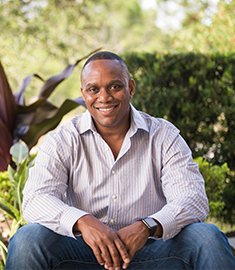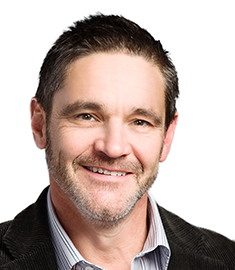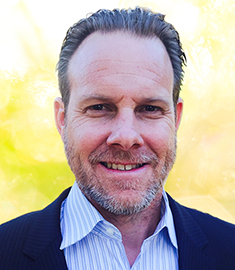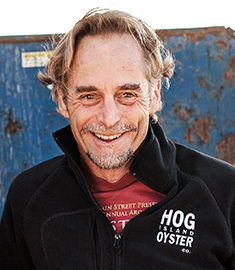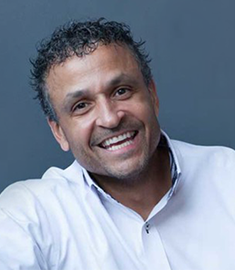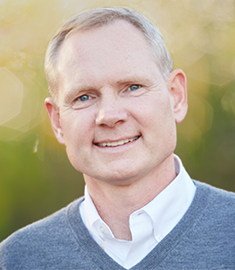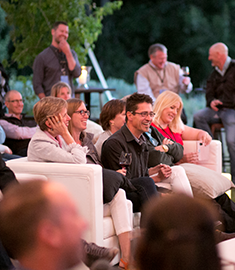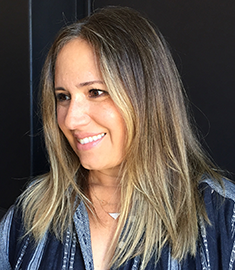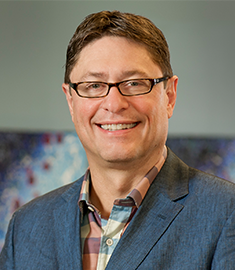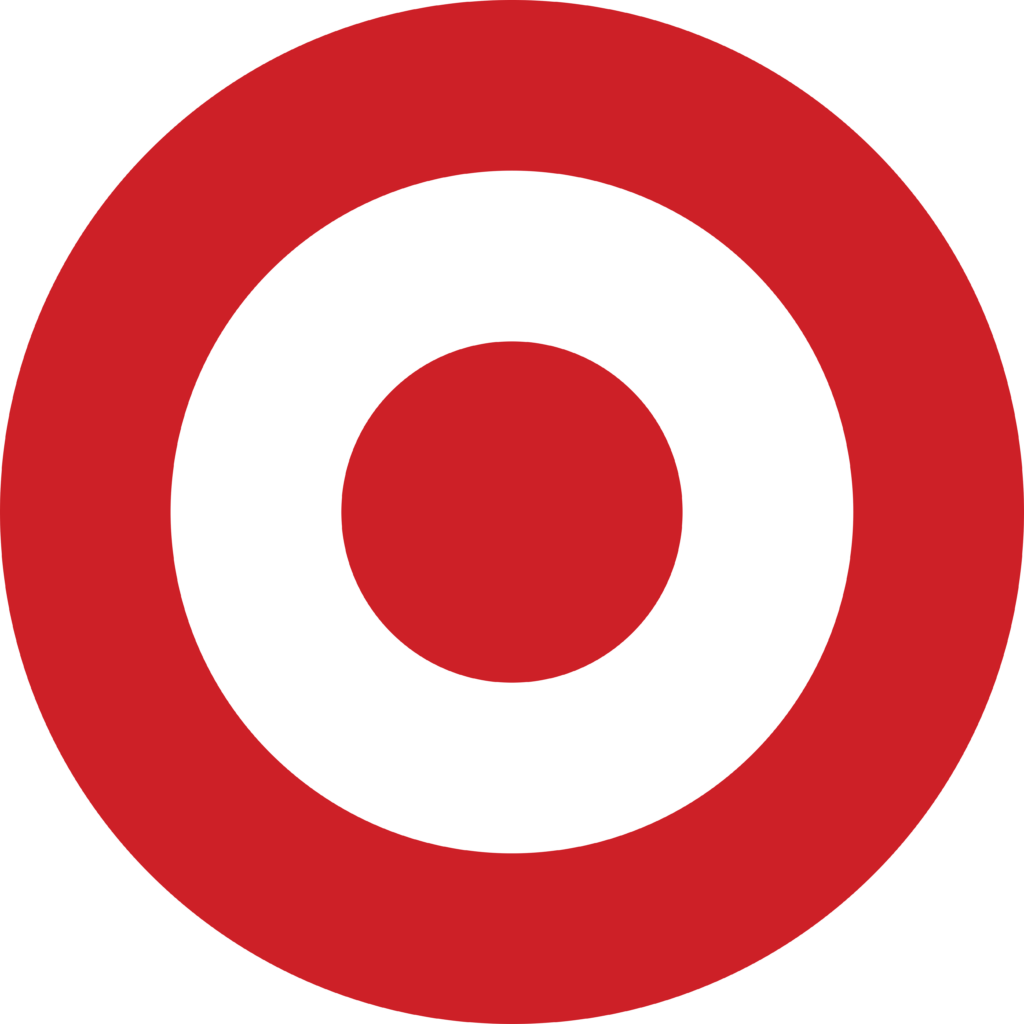Finding Our Core Values
Since 2002, year after year, my company’s sales were robust, profits were up and my executives were aligned. On the surface, everything looked great. But I recognized that I was facing a significant long-term problem: time. It was marching on, and most of my executives would be retiring within the next 10 years. I had to figure out a way for new hires to understand and embrace the core values that helped us grow and prosper.
As luck would have it, I met Dave Whorton at an employee ownership conference in Colorado.
It’s hard for me to describe the sense of relief and excitement I felt when hearing Dave talk about the meaning of an Evergreen company. I thought, Wow, that’s us! And for the first time, I didn’t feel weird. I felt at home with a like-minded executive. When he went into the details of the seven P’s, it all made perfect sense to me. I was thrilled that he asked me to join the Tugboat Institute and, shortly after, I applied for Evergreen Certified status for Life’s Abundance.
I had been at Life’s Abundance, which sells premium wellness products, for more than two decades. Over the last several years, I had been thinking we needed a way to explain our beliefs both internally and externally — but that proved to be a lot easier said than done. We certainly had values essential to our core since the very beginning. Dennis and Carol Berardi co-founded the Florida-based company in 1998 to enhance the lives of people’s families, including their four-legged members. They wanted to develop and sell products with healthy ingredients in a transparent, private and sustainable manner.
I joined the team just a year after its founding, in 1999. I loved the idea of creating and selling small batches of healthy pet food and human supplements to health-conscious consumers. Early on, I suggested we stay online so that we could maintain control of the product, have a more personal relationship with each buyer and keep our team members well-informed.
In 2011, three years after I became CEO, I started fiddling with this idea that our core values needed to be spelled out in order to be effectively shared. Until this time, it seemed like we didn’t really need such a thing. All the founding members of the company were still part of the team. We were a tight-knit group with a similar value system. But I just couldn’t figure out how to share this feeling with newcomers.
Every once in a while, we gathered to try to come up with ways to describe how we work together with so very few disagreements. Nothing ever felt or sounded right. We even brought in outside consultants, but what they suggested never captured it. By last year, panic over this set in. Our core team members were starting to retire. I realized that I was going to lose 120 years of combined experience and culture over the next few years if we didn’t have a core set of values to maintain. I started feeling like I was on the brink of a serious culture problem.
Thankfully I met Dave, and soon thereafter I had the opportunity to attend the Tugboat Institute Summit. When Robert Glazer, founder and managing director of Acceleration Partners, spoke about the importance of core values, I was motivated. He said that you don’t need a company mission statement to communicate your vision and core values. You simply need three words that represent them. It was a watershed moment for me, and immediately I knew that Evergreen was the first core value. Now I needed two more. To produce consistently great work, it’s important to focus on the recipients of our work (both inside and outside the company) rather than ourselves, so I chose empathy as the second core value. And because it takes energy to avoid being mediocre and to innovate and lead, that became our third core value.
Rolling these values out to my team has been a lot of fun. We have established a blog where we talk about each of the core values and how we can put them into action. We update this blog several times a day — and I can keep track of how often people are reading the articles and watching the videos. They can also post content. We have a growing wall of sticky notes where people can throw up ideas relating to core value action. And every week, I have a presentation where I discuss one core value and elicit feedback and stories pertaining to that value.
So far, the results have been amazing. People are sharing a lot more and their language is starting to change. For instance, teammates are starting to talk about the Energy it takes to get a job done or how they had Empathy when speaking to a customer earlier that day.
These core values have been rolled into our hiring processes and have affected what kinds of questions we ask people. They’ll be very helpful in determining the types of characteristics we want in people who exemplify our core values.
I am incredibly inspired and excited by the results, and I look forward to our next step: communicating our core values to the outside world.
Lester Thornhill is the CEO of Life’s Abundance
Surviving Death Valley
In 2011, my co-founder and I had the kind of moment that most business owners dream about — several buyers were sniffing around our 15-year-old specialty-chemicals company, Essential Ingredients. But while a sale might have ushered us off to early retirement with bags of money, we worried that our employees would suddenly be jobless.
So instead we formed an employee stock ownership plan (ESOP), which gives ownership of the company via stocks to the employees. Since we had always made People First a priority, the ESOP seemed like the greatest way to provide our team with job security as well as a healthy retirement fund. We made the exciting announcement at our next big employee meeting. As our employees cheered, we felt sure we had made the right decision.
And then almost immediately the company went into a financial nosedive.
We call those first few months after forming the ESOP “Death Valley.” We were never able to determine any one thing that caused it, but this was the lowest point in our company’s history. The most stressful part was the fact that the company had just taken on significant bank debt (for the first time ever) to finance the purchase of the employee shares from my partners and me.
We (the original shareholders) were used to using our private assets as guarantees against small loans or lines of credit we had with the bank. However, we had never been under a bank covenant, which requires a banker to review our finances and results quarterly (which soon became monthly). This oversight put us under a whole new level of stress as we were now beholden to an outside party. Previously, if we had a bad month, we would be disappointed but we would adapt and adjust. Now we had outside eyes offering a cold critique of the numbers.
I found myself meddling a lot in sales matters, pushing our sales team for quick short-term results, working to cut costs and, in essence, regressing to running the business the very way I hated — by the numbers rather than by our values. It was a horrible experience. I remember meeting with our banker during this time over coffee, and he asked me that dreaded question, “What keeps you up at night?” I laughed and told him, “YOU do. When I close my eyes at night I see your face!”
When we realized this behavior was impacting our culture and the way we were driving the business, the original partners and I used closing funds we had received, reduced the bank debt and converted that to additional seller notes. This allowed us to dial back the financial pressure and run the business the way we always had, focusing on long-term results and working according to our mission.
The good news is that we were able to turn things around while staying true to our values. Today, our balance sheet is strong. We’ve enjoyed double-digit growth over the last several years, and sometime in the fourth quarter of 2018 we will be crossing $100 million in annual sales for the first time. While we rely on a bank for our credit line, we have no long-term debt and don’t plan to have any ever again. I won’t allow us to go back to working under that kind of unnecessary stress.
We’ve also been able to enhance employee engagement and financial understanding by adopting open-book management (based on the Great Game of Business). While we were building the business back up, we learned that, as an ESOP, there was no way for our people to truly feel like shareholders unless they had exposure to the numbers and the results on a regular basis.
Our employee-owners today feel more closely connected to the results because they assist in the construction of the plan and receive weekly updates on our joint progress. Almost everyone from the day of that announcement is still with us, and we have gained approximately 25 more employees. Our company shares have gone from $2.25 to more than $55 since the fall of 2011.
Times of crisis test one’s values and character, and significantly shape people and businesses. If things are going easy, there’s no reason to ask the hard questions. We Persevered through “Death Valley,” and I like to think enduring this trial only strengthened our resolve and that this strength will serve to sustain Essential Ingredients for many years to come.
Kris Maynard is the CEO of Essential Ingredients
Wildfire Sparks New Growth
Ten years ago, a wildfire tore through my family’s flower farm in Southern California. We grow more than 100 types of flowers and fresh greens, including eucalyptus, waxflower and avocados, and in less than 24 hours, they were basically all gone. We lost 80 percent of our crops as the shifting winds fanned flames across our 500 acres of rolling hills.
And the future looks pretty darn good. We are way better off now because of that wildfire. It refined us and made us stronger and more resilient as a team.
Jason Kendall is the owner of Kendall Farms.
Sustainable Innovations in Oysters
Thirty-five years ago, I was a restless marine biologist stuck working in restaurants to pay my rent. A fresh East Coast transplant in the Bay Area, I found myself spending a lot of time thinking about how diners could buy only raw East Coast oysters. Even though I was broke, I set out to achieve something previously unimaginable on the West Coast: sustainable raw oyster farming.
On the West Coast, oysters were naturally grown in clumps; by the time they were strong enough to break off, they were too big for raw consumption and generally used in stews or barbecues. I wanted to experiment with what oyster farmers were doing in Europe: the “single seed” method. This involves scattering the oyster larvae on powdered shell chips so they grow farther apart from one another.
The problem was, back in 1983, my partner, Terry Sawyer, and I didn’t have a lot of money to spend. We cobbled together some funds from our various odd jobs and managed to lease five acres of shellfish land in Tomales Bay, just north of San Francisco, and buy a handful of oyster seed.
We quickly discovered that the single-seed method allowed us to manipulate the oysters’ growth, making them smaller for half-shell consumption. We were among the first on the West Coast to implement this process for Pacific oysters.
With this first batch of Hog Island oysters — named after a nearby island — we quickly realized it was an uphill battle in the marketplace because people were suspicious of raw Pacific oysters. We spent months knocking on restaurant and wholesalers’ doors with samples, finally getting our break with an old friend at Marinelli Shellfish, a marketing and distribution company. Marinelli sold our oysters to Zuni Café and Chez Panisse, two local restaurants that were among the first to promote locally grown foods.
Yet in those early years, we could only harvest in winter because the shelf life of oysters isn’t very long in the warmer months. This meant we had no cash flow for many months out of the year — and we were struggling to get the business off the ground. In 1987, we took on a third-party investor to allow us to further innovate. We added chilled, filtered seawater tanks where we could store harvested live oysters year-round.
That was a game changer for us. We had recently set up a traveling oyster bar that catered events all over the Bay Area, and now it was open for business all year. And to further help with cash flow, we opened the gates at our bay location off scenic Highway 1 to people who wanted to stop in for an oyster.
We added picnic tables and then barbecue stations — and soon we lucked out with some great free marketing. Magazines like Sunset were writing about us, and suddenly we went from 100 percent wholesale, seasonal sales and waiting to get paid to having a booming year-round business.
But all through this exciting time, my partner and I were quietly fighting for our company’s life. Unfortunately, we had allowed an investor to own half of Hog Island Oyster Co., and by 1994, we were at loggerheads with this man, who would not agree to anything — and who was taking half our profits. We started the process of dissolving the company. It was a very dark period of time because we thought we were going to have to throw away all our innovation and efforts. I even did some carpentry work on the side, getting ready to figure out a new career. Through many rounds of grueling mediation, rather miraculously, we bought him out for $50,000 in 1995. We then brought in a group of like-minded investors — friends and family, people who believed in what we were doing — to restart the business.
That’s when our Evergreen company was truly hatched and our next wave of Pragmatic Innovation began. We wanted to be vertical — in part to never be dependent on anyone again — and set our sights on selling our oysters in our own restaurants. It took a couple years to gain back what we lost through the investor debacle, but in 2003, we opened our first restaurant in the SF Ferry Building. We doubled our revenues and employees in one year.
We loved the farm-to-table idea — we call it “bay to bar” — so we have decided to focus on this rather than wholesale. We have three restaurants in the Bay Area and recently purchased a fourth; we are very careful about our growth and have passed on many offers over the years.
We’ve just recently found a facility in Humboldt Bay where we can have an oyster hatchery and a nursery. This way, we are now producing our own seed, which we can grow to create oysters that we sell in our own restaurants. We think chain of custody is very important with this food. We only sell directly to restaurants — we want to know they are doing a good job, so we check it out. We have about 25 accounts in the Bay Area now. From October to May we ship nationally to just a few accounts. We do just a bit of wholesale these days to keep our name in the marketplace — and we handpick to whom we sell.
Another idea we’ve had recently is to create salt flats. We bought a 250-acre farm across the highway from us in Tomales Bay. We’d like to expand our wet storage tanks, but we can’t just release salt water onto that land. However, we might be able to harvest the sea salt in some way. There are a lot of cheese farms nearby that buy sea salt, so we think this might be a great symbiotic relationship.
Today we have 160 acres in the bay, and we harvest and sell over 3.5 million oysters, Manila clams and mussels every year. Our innovation strategies have shifted to joyful experimentation now that we have enough money to spend on our dreams. But every idea we act upon is always grounded in the reality and wisdom that comes from years of fighting to survive.
After all, Terry and I both have family who work here, including our sons. The exit strategy is simple: Never sell. All I want is sustainable growth and to set up the company for another 35 years of success.
John Finger is the co-founder and CEO of Hog Island Oyster Co.
My Father Was a Pimp and Drug Dealer
My father was a drug dealer and a pimp — a real pimp who put women on the street corner. My mother was a young woman from an orphanage who had no family, money or support. There’s no gentle way to describe it: My childhood was a hardscrabble affair marked by dramatic incidents of racism, drug abuse and neglect.
Today I lead an Evergreen company, Book in a Box, which helps people tell their own stories.
My mom loved me, but we were terribly poor, and she faced a lot of prejudice in ’70s Dayton, Ohio, as the unmarried white mother of a half-black child. One of my earliest memories is of returning home from the bus stop with my mom and seeing all our belongings lying on the curb outside our apartment. The landlord was outside yelling, “No nigger-lovers can live here.” I remember sitting on that curb crying.
When I turned 9, a complicated welfare issue forced me to move in with my dad, and those years were complete chaos. On a regular basis, I watched him beat women and bring home heroin-addicted prostitutes. They would force me to babysit some of my little half-siblings (my father had 23 children) as they brought johns back to the apartment. Once my father abruptly moved to England for a year, and left me with a prostitute and three of my half-siblings who were 4, 2 and 1 years old. The prostitute said she was going to get cigarettes, but didn’t return for three weeks. I had to teach the 4-year-old to babysit while I stole food. We had no diapers so I had to potty train the little ones. I remember stealing three Oreos for my little sister’s third birthday. When the prostitute finally came home, I asked where she had been, and she punched me so hard I fell to the floor. I was 12 years old.
That was when I left and started living on the streets. I lived in a bus stop for a while, but eventually ended up in juvenile detention for three months before an uncle took me in. My mother tracked me down when I was 15 and moved me back in with her, this time in San Antonio, Texas. I was in 10th grade, but testing at a fifth-grade level. I struggled through a couple rounds of summer school before finally graduating. A janitor handed me my diploma, and that was the end of my formal schooling.
After graduation, I received my call to action: My mom gave me two weeks to find a job. I found work cleaning toilets and tables at a local restaurant. The job was miserable and I longed to quit. But I never wanted to be on the streets again, so instead of complaining, I decided to be the best busboy and toilet cleaner in all of San Antonio. My toilets would sparkle, and my salt and peppers shakers would always be full. In a way, I found something better than a mentor: personal gratification in being successful at my job.
Thank god this youthful bout of optimism actually paid off. After about six months, a couple dining at the restaurant noticed my hard work and invited me to come make candles in their mall shop. I was earning more money and with lots of cute girls watching me through that window, I endeavored to be the best candlemaker there ever was.
I crossed the threshold into corporate life when my mother helped me land a job in the mail room where she had been working at Nationwide Mutual Insurance Company. Although my job was to sort mail, I treated it as an education, watching how the corporate people shook hands and communicated. It was so different than anything I had ever been exposed to — I memorized the cordial social cues.
But I didn’t see myself as having a future at this company. So when a friend told me about a job at a payday loan shop, even though it meant proofing deposit slips, one of the most tedious jobs there is, I took it. Right away I asked my manager what were the most reports ever proofed in a day — I doubled it the next, and continued to drive that number up.
Three months in, the owner took notice. He started teaching me about consumer finances and loans and, within a year, promoted me to a traveling vice president who checked on all the offices around the country. Eventually he sent me to Eugene, Oregon, where I was told to figure out how to open an office. I was 23.
I ran that office for three years and bought out two competitors. But I missed Texas, so I headed back down south. I ended up at Wachovia bank as a mortgage broker, just as the real estate crisis hit. It was the biggest ordeal of my career. I lost everything I had built up over the years. I was flat broke — no money to buy even new underwear or T-shirts.
By 2011, I found a job in sales as the lowest-paid employee at a software company. There I had a second chance and called upon my old work ethic. I knew nothing about software, but I did know how to sell and follow up on business relationships. I started calling the company's competitors to learn their pitches and taught myself how to sell software. Within seven months, I closed $1 million in sales — the year before they had $2.7 million in revenue, so this was not insignificant. I built relationships with large enterprise clients and climbed the executive ladder. In 2013, less than three years after I started, I became the company’s president. Under my steerage, we went from one office and 13 employees to over 100 employees and four offices, including one in Monterrey, Mexico.
I finally felt like I was reaping rewards in my professional life. But I still felt I had more to offer. I had come so far; I thought I could give back to the world by sharing the things I had learned along the way. I realized I wanted to write a book, and I reached out to Book in a Box, a company that helps people turn their ideas into books. It was a call that changed my life. With the company’s founder, Tucker Max, I wrote my memoir. I also ended up offering Book in a Box some advice about how to better manage and scale their company, and they invited me to join their board of advisers. One morning in 2016, they offered me the CEO position.
It was a job I gladly accepted, despite a dramatic pay cut. At the software company, I took only 11 days of vacation in five years. There’s a photo of me working on my laptop in the delivery room during the birth of my first child. It was very hard to leave the software company, but ultimately, I wasn’t passionate about software. On the other hand, at Book in a Box, I love hearing people’s stories; I love turning them into books. When I was a kid, I wasn’t even allowed to take books home with me because teachers were afraid we’d steal them.
I also love helping people find belief even in their darkest tales. And it helps me sort through my own conflicted thoughts on the people who populate my memories. My mom always told me to never judge anyone else — that everyone has a story.
Finally, I’m at peace with my father. I hadn’t spoken to him in 30 years, but I returned home to attend his funeral a couple years ago. It was a cathartic moment. After all, somehow I got to where I am today — perhaps because of, rather than in spite of, my roots.
JT McCormick is the president and CEO of Book in a Box
Pragmatic Innovation Keeps Us Alive
Long before I even understood that our family business was Evergreen, my father was instinctively pursuing Pragmatic Innovation to survive challenging times.
Back in the 1980s, the farm crisis hit my home state of Iowa hard. It was devastating. As farmers lost their land or had to pinch pennies to avoid foreclosure, many of their businesses went under. But not our family’s John Deere equipment company, which my dad had bought in 1977. We had to make sacrifices as a family. Instead of cutting costs to the bone while hoping sales would come back, my dad focused on what innovative things we could do to drive new revenues and cash flow.
My father came up with the idea of creating a new attachment that could make farmers’ current field cultivators more efficient without having to completely replace the machinery. He manufactured this attachment, successfully marketed it and sold the patent to John Deere. My dad also figured out marketing programs that kept the dealership’s service department busy in the off-season. These ideas helped keep our business alive.
I was a teenager when I saw my father use innovation as a survival tactic. After working as an auditor for Union Pacific Railroad, I went on to business school at the University of Michigan, and then took a position as an online marketer for Hallmark Cards before working in my dad’s company for about five years. In 2006, I joined Southwest Airlines as marketing and strategy manager for Southwest.com. I was eventually given responsibility for the product development and advertising teams at Southwest.
In 2009, I had the opportunity to implement what I had learned from my father all those years earlier. The 2008 financial crisis had hit hard, and the airline industry was suffering. Based upon the lessons of my dad, I focused my team on what Southwest could do in a short period of time to drive revenue without investing a lot of money. In other words — Pragmatic Innovation.
Southwest had an open seating arrangement. As you checked in, you were given a number, like A15 or C26, which reserved you a place in line. I started thinking that people just might pay more to get to the front of that line. We came up with an idea that led to the creation of EarlyBird Check-In for an original price of $10 a crack. We tested it, and then implemented it successfully. It helped Southwest successfully navigate the recession and has contributed millions of dollars of annual profit ever since. I loved the People First culture at Southwest that sustained us even in bad times, and often thought how we could make our own family business more like Southwest.
By the end of 2014, I moved with my wife and children back to Iowa to lead my family’s John Deere business. It has not been the best time to be a John Deere dealer. We’re not experiencing a farm crisis like in the early 80s, but it’s been a crisis in terms of low commodity prices that have reduced gross farm incomes. In addition, many farmers had purchased significant amounts of newer equipment during the commodity boom prior to 2014. There’s tremendous tension in the marketplace due to both dynamics. The result is that used equipment values have suffered and most farmers aren’t buying equipment right now.
Like my dad, I view tough times as full of opportunity. We have grown from five agricultural dealerships in Iowa to 20 in the past four years. We’ve grown our employees from 300 to 600. We have diversified our business so we are now selling solar panels and forklifts to our customers instead of just relying on tractor sales.
About two years ago, we heard from a customer who wanted a way to plant corn seeds in closer rows for more corn per acre. We partnered with a local manufacturer to build the planter, which is now produced by John Deere for the open market. We saw a need, thoughtfully innovated to address that need and made the customer happy. Around the same time, we introduced our Solutions 360 service, which helps customers improve their profitability per acre by improving their agronomy choices and reducing the risk of a poorer crop year.
We’ve also recently designed a process for assembling precision GPS sprayers for chemicals so that there is less waste on large sports fields and golf courses. We have executed a marketing agreement with John Deere and we now distribute the sprayer through other John Deere golf and turf distributors.
While I have leveraged Pragmatic Innovation during tough times, I want to maintain this mindset even when things are going smoothly. It’s what will drive Paced Growth of our Evergreen company through thick and thin. It helps create more profit for the company and allows us to provide more jobs and opportunities for our employees. My dad still works full-time for our company, as do my two younger brothers. I hope that through our Evergreen values, we will have a strong business to pass on to our next generation as well.
Mike Van Houweling is the COO of Van Wall Equipment
New Year Letter From The Tugboat Team
Dear Evergreen Journal readers,
We hope you had a wonderful holiday season and are excited for 2018! Thank you for supporting the Evergreen Movement.
Reflections on the Past Year
Tugboat Institute membership grew 40%, expanding the footprint of our group across new geographies, industries and company sizes. This paced growth keeps our community vibrant and brings new ideas and wisdom to bear.
For me, the Tugboat Institute Summit 2017 in Sun Valley was our best one yet. I attribute it to the authenticity, curiosity and selfless giving of our members. It’s truly what distinguishes our group. Of course, the talks, outdoor adventures, food, drink and celebration were exceptional and icing on the cake. A warm thank-you to members who shared their stories and best practices with us from the stage: Chip Dickinson, Bob Glazer, Stella Ma, Robert Pasin, Joe Reynolds, Jess Rovello and Jed York.
We tried a different format with Tugboat Institute @Louisville in October. It was curated and led by growth expert Professor Ed Hess and used a mix of homework, lectures and peer workshops. A special thank-you to Carrie Van Winkle Greener and her family for the tastings, and Aric Andrews for Churchill Downs. Both made the experience feel extra special and intimate.
Our small and mighty team grew in 2017. We welcomed Maria Hilton to the member relations team.
Through the Evergreen Journal, we chronicled 27 Evergreen CEO stories and best practices, and shared 15 talks and videos. Participating in our Evergreen Journal is one of the most tangible ways our members contribute to the broader community and Evergreen Movement — a heartfelt thank-you to each and every one of our authors and speakers.
Key Gatherings in 2018
Tugboat Institute Summit 2018 will take place in Sun Valley in June.
Our Fall Exemplar event returns to our roots and befits the name. Tugboat Institute @Enterprise will be hosted by Enterprise Rent-A-Car Chairman and CEO Andy Taylor and his daughter, Chrissy Taylor, at their headquarters in St. Louis, Missouri.
Small Improvements
You will see a few changes in the new year. First, we have redesigned several of the key pages on our website. Please take a look!
In a shift in philosophy, we want to prioritize easy sharing of Evergreen Journal content over driving traffic to our website. This includes a new format for our EJ newsletter that is easier to read and forward, and more share buttons on our EJ content. When you read or watch something you enjoy, please take an extra moment to share with your network, whether by email or social media. Lastly, at the end of Q1, we will be mailing out our first Evergreen Journal quarterly print publication, which will highlight the articles and talks from the prior three months. For those who like old-fashioned paper, this will be a nice read and something to pass around, too.
We want the world to be exposed to the inspiration, ideas and best practices in the work, family and life of our Evergreen community. If you have other ideas for us on how to do this better, we are all ears!
Final Thoughts
Every year offers the opportunity to reflect, adjust and be better. My team and I will strive to learn, improve and grow in work and in our lives. And we hope for the same for you, your company, your family and your community. All of us contribute to making our society better for everyone.
With Gratitude,
Dave Whorton & The Tugboat Team
Get Out of the Office
Over the years, I’ve seen a pattern: entrepreneurs who keep pushing to grow even when that growth isn’t healthy for the company. It’s not surprising — like the Geico ad says, “If you’re an entrepreneur, it’s what you do.” This is a behavior I’ve had to guard against myself. One of the things I do is cultivate personal interests outside of my company. Today I chair our city’s economic development board, I mentor a few younger founders and I helped start a nonprofit that recently purchased a tall ship for our city. These activities absorb plenty of energy, allowing me to pursue a more thoughtful growth path for our small restaurant company.
It took me a while to learn that lesson — that fast growth is not always good or healthy. In my 20s and early 30s, I thought you should always grow a company as big as it can get. If not for a more cautious partner, I probably would have grown our first company right into oblivion.
Then in 2000, I founded Fishbowl, a customer engagement platform. Software is a different world, where you really do have to grow or die, especially when your competitors are very large, fast-growing companies. Taking venture capital money and joining the race was the right strategy for us, and it paid off when we sold the company to a Silicon Valley private equity firm. But it still never felt right to be planning an exit. That was at odds with the elements of a great company — a long-term vision, a worthwhile purpose, a focus on people and a clearly articulated culture.
So for my next act I returned to my roots, joining forces with two former restaurant colleagues. Our new company is small by design, a collection of six unique concepts located close to one another. This hyperlocal strategy lets us leverage our customer base, provide more career opportunities for our people and stay close to our operations. Even our name is intentionally limiting: Alexandria Restaurant Partners. When national developers call, I politely tell them to look at my business card.
Staying small does not mean opting out of growth, though. One of my heroes in the restaurant business is Joe’s Stone Crab, a family-owned business in Miami Beach that resisted opening more locations for its first 75 years, and then opened just three more in the next 25 years. Slow growth? Not at all. They bought the city block they sit on, expanded the original location, added a huge takeout operation, grew a fleet of ships to make sure they had a reliable supply chain and began shipping stone crabs in the pre-internet era. They are a private company, but are reputed to do over $30 million a year with very high margins.
The Joe’s Stone Crab lesson is that there are always ways to grow your business organically, by focusing on what’s right in front of you. And those opportunities are usually the best ones. We tried this ourselves a few years ago, opting to renovate and expand one of our restaurants rather than using that money to open a new one. We spent $1 million and now generate over $500,000 in additional profits annually. A pretty good financial return, but the real payoff was in strengthening the underlying business.
At the end of the day, growing a business should be fun. It’s about making things happen, and working with people you like and respect. Size doesn’t really matter here. If anything, it gets less fun as you grow bigger. It took a while for me to see this, but I’m glad I did. And I’m glad I’ve cultivated outside interests. They are just as challenging and often as fun as working in my own company. But I also think they are the key to helping our company grow at its appropriate Evergreen pace.
Scott Shaw is the partner at Alexandria Restaurant Partners.
Quality Reigns With Paced Growth
I founded my company, Ingrid & Isabel, 14 years ago with one simple product: the Bellaband. When I was pregnant with my daughter Isabel, I hit a point all pregnant women hit — I could no longer button my jeans. But instead of buying a bunch of maternity pants, I fashioned the first Bellaband, an elastic band that let me keep wearing my pants without having to button or zip them. Because it was such a common problem, my friends started clamoring for Bellabands. Today, we have sold millions of maternity bands, holding pants up worldwide.
But companies can’t exist on one product alone. That’s called a one-hit wonder, and I wanted to build an Evergreen business that would last for generations.
Retailers typically look for trends so they can capitalize on them by selling mass quantities quickly. But my prior work experience was at advertising agencies and marketing departments at tech startups, not in retail. Both of these careers were grounded in research and development, so I intimately knew the value of product prototyping and testing among your customers, as opposed to rushing to market.
So instead of reacting like a fast-paced retailer, I acted like a marketer and embraced the Evergreen principles of Pragmatic Innovation and Paced Growth. This choice defines us as a company and a brand.
Our revenues are up about 40 percent this year alone. We’re doubling the size of our staff. And as of July, we have a new exclusive maternity collection for Target, after being on a small portion of their floor since 2008.
But it wasn’t always easy. I passed up many quick-hit trends, like faux-denim ripped jeggings, in favor of Paced Growth, sometimes spending years market testing products on pregnant women.
For new items, like a nursing bra, we go through several stages of research with hundreds of moms. We interview them about their current garments, we have them bring their old nursing bras into our office and show us what they like and don’t like about them, then, we design to her issues. Everyone in my office tries on our prototypes before we ask more women to come in, try on, take home and wear repeatedly for weeks, washing and living in our samples. Then we get their honest feedback. It took us three years to develop a nursing bra we felt confident would work. In comparison, large companies in this category may take about four months to produce a new item.
The result is high praise from moms.
Keeping a close connection to mom has also yielded ideas for new products — like the Afterband. Postnatal clothing is a very crowded marketplace, and we didn’t care for the tone of that space — rushing mom into being small again, being sexy again, and doing it faster with corseted garments. From our research, we knew mom really well and had a hunch that these products and this attitude couldn’t be sitting well with her.
And we were right! Our deep tests revealed she despised most of the postnatal garments on the shelves, but was so overwhelmed with a new baby, she would never return them. Therefore the market stayed stagnant. We went to the drawing board and spent three years developing an entirely different band that appreciates mom’s time to heal and her need for support. Our Afterband grants her the patience to recover from pregnancy at her own pace. And it’s working. Sales are strong and mom’s comments are outstanding.
It’s pricey and time-consuming to do all this research and development. But the commitment pays off, and I’m always glad we do this work regardless. When we launch something, I need to feel absolutely secure it’s the right item for the current batch of pregnant women who are our customers. Perhaps we don’t produce as many items as larger companies, but every single one has been created with a bespoke mindset.
Being Evergreen allows us to be patient in developing the deep market insights and internal capabilities that I know we need in order to grow a sustainable company. If I’d had investors, I’m confident they would have encouraged me to rush our Target partnership years ago, or forced me to take on other significant partnerships to drive short-term revenue growth. Our offerings, and our company, wouldn’t have been ready. Thanks to our practices of Pragmatic Innovation and Paced Growth, we are now.
At the end of the day, I want to make sure our customers know that ours is a company that really cares about mom. She inspires us, not the marketplace.
Ingrid Carney is the founder and CEO of Ingrid & Isabel.
Fighting Back with Purpose
It took getting removed as the CEO of my own company for me to truly comprehend what my team and I needed to thrive. With more than a little grit and humility, I was able to Persevere through that difficult period and eventually return to grow my marketing communications firm, Firespring, into the Evergreen company it is today.
Before I founded Firespring, I launched an AlphaGraphics franchise in 1992 in Lincoln, Nebraska. I encouraged the franchisor to embrace the early promise of website design, making ours the first franchise to open a dedicated commercial website division. When one of my team members had a lucky encounter with the Backstreet Boys at the running of the bulls in Spain in the mid-1990s, we landed the boy band’s website design. Suddenly our website business was flourishing.
Building upon our success, in 2001 I bought out our franchise agreement with AlphaGraphics and launched Firespring (then named Digital IMS) as a website design and software-as-a-service company. I raised about $5 million in venture capital and expanded into 10 cities. We experienced explosive growth, closing one out of every three demos — and then everything fell apart.
After 9/11, everyone began cutting back, and suddenly we couldn’t get face time with prospects. Our close rate changed to one in 10. I made a lot of mistakes before and after that period. One was taking in capital without protecting myself and my employees. I had given too many of our board seats to institutional investors who now wanted immediate change. They wanted us to do more one-off custom work that would bring in fast money — business I’d always rejected because it’s not sustainable. They wanted us to stop serving nonprofits — a slice of our business that wasn’t incredibly profitable but gave us a strong sense of Purpose.
And in 2002, they ousted me as CEO of my own company. I remained on the board as one of seven directors and was assigned to a leadership committee of three people tasked with making decisions on behalf of the company. While I was still the majority owner, investors were essentially controlling every decision.
I had a brief moment where I thought about giving up. But after hitting that low, I gained clarity on what I believed the company should become.
I wanted a company that prioritized meaningful impact and sustainable profitability over chasing revenues for growth’s sake. And I believed we could become that company. I met with my team and apologized for letting them down. I told them I was going to fight for this new vision. We would have a greater focus on nonprofits. The switch would mean less revenue but a leaner, healthier company with a clear Purpose. Given our struggles, employees could have easily left the company and doubled their income. But they were moved by our new vision and stuck by me, even when I wasn’t sure yet how a plan would unfold.
Over the next five months, I swallowed my pride and pleaded to my family and a few friends for loans to buy out our investors. What made it feel worse was my asking them to help fix my mistakes. But it was worth the humility. Taking six months, I was able to regain control of my board and step back in as CEO of our nearly financially devastated company.
Of the 35 employees who were at Digital IMS when I was removed as CEO, 31 remained and stuck by me. Each of these employees took a 50 percent pay cut, and some deferred even more. I launched an open-book system, and together we worked to focus on securing consistent, steady clients and more nonprofits. These nonprofits paid less than companies looking for big creative projects but they gave us consistent monthly revenues supporting our move to Paced Growth. In 2004, we had not only turned the tide — we actually generated a net profit of more than $1 million. And in 2007, we changed our name to Firespring to better promote a national brand.
Today we are a company of nearly 250 people and have more than 9,000 clients in 12 countries and in all 50 states. Inc. magazine named Firespring one of the top 50 places to work in 2016. And we’ve donated millions of dollars to nonprofit organizations. In 2014, we became a B corporation to strengthen our mission to “leverage our people, products and profit as a force for good.”
My path has been one of Perseverance, but it’s also been about the importance of Purpose to our people, and just how loyal and amazing they are if you do the right thing. Nearly every employee who stayed with me during that troubled time in 2002 is still with Firespring today. Together we’re building a strong Evergreen company that makes us all proud.
Jay Wilkinson is the founder & CEO of Firespring.
